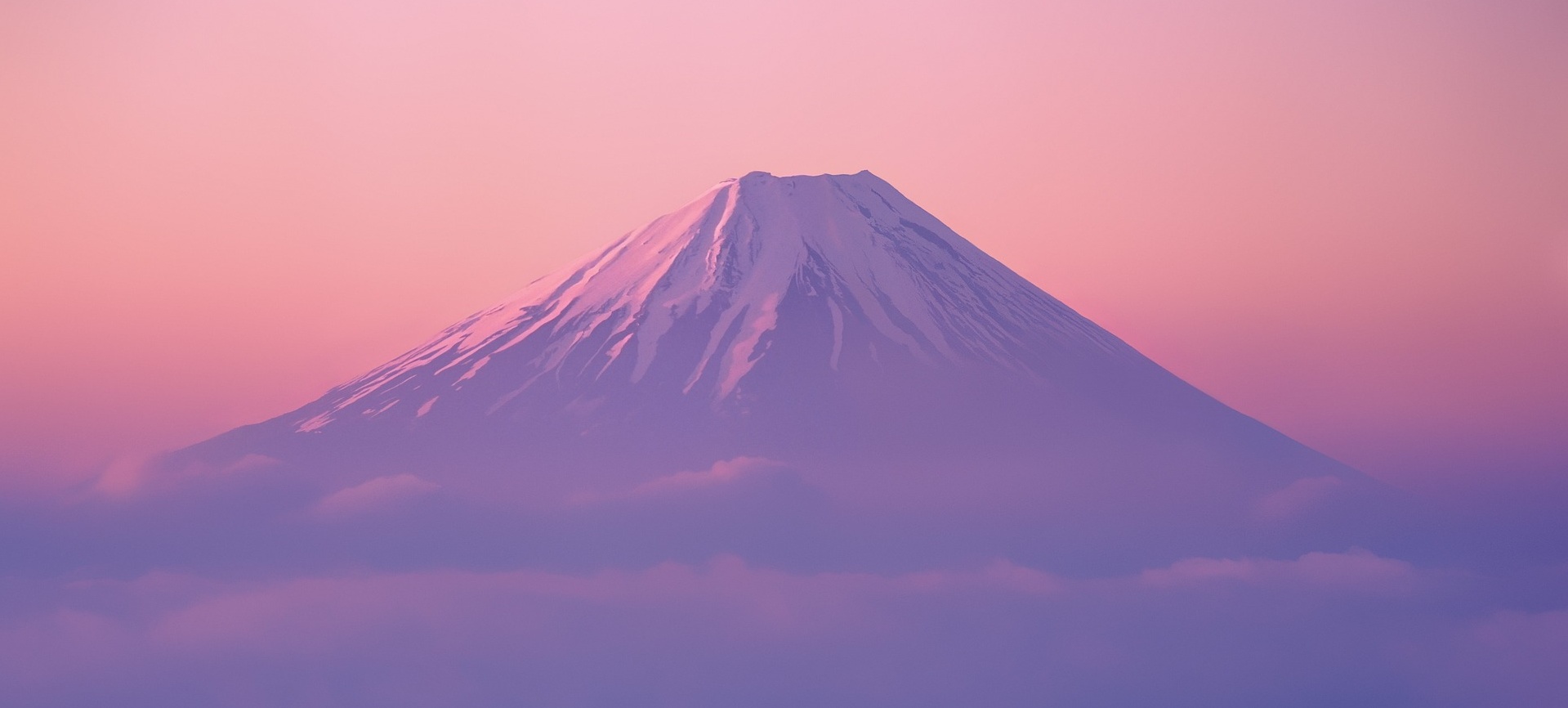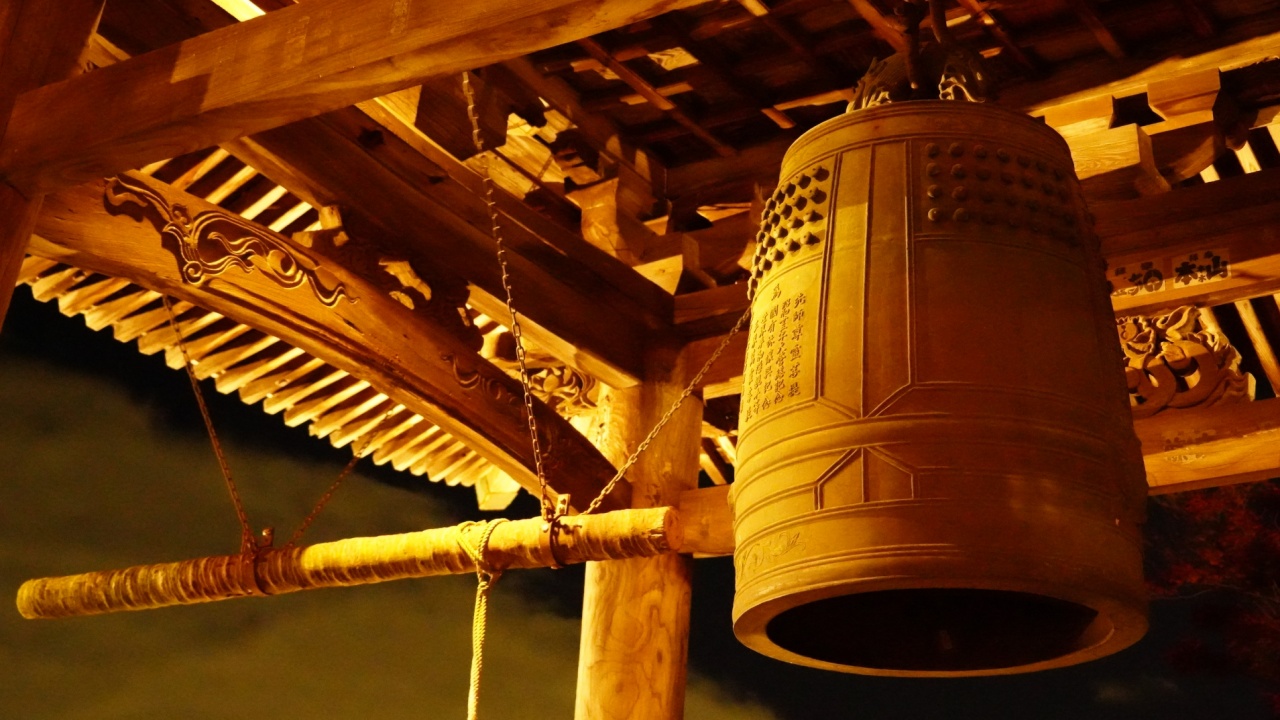12月31日のこと。旧暦では、晦日(みそか)=30日がひと月の末日で、12月31日は1年の最後の月の末日なので、大晦日(おおみそか)と言います。正月を迎える準備の仕上げの日です。
It was December 31st. In the lunar calendar, the 30th is the last day of a month, and December 31st is the last day of the last month of the year, so it is called Omisoka (The last day of the year) = New Year’s Eve. This is the final day of preparations for Oshogatsu (January) = New Year.
お正月(歳神さま)を迎える準備は、餅つきと同じく29日・31日を避けて行われるものがあります。
Preparations for the New Year (Toshigami) are made by avoiding the 29th and 31st, just like mochi pounding.
29日にしめ飾りや門松などを飾るのは「く(9・九)飾り」31日は「一夜飾り(いちやもち)」として、縁起がよくないとされている
Decorating things like Shimekazari and Kadomatsu on the 29th is considered to be “ku (9/九) decorations,” and the 31st is considered to be “Ichiyakazari,” which are considered unlucky.
お正月飾り/New Year Decolations
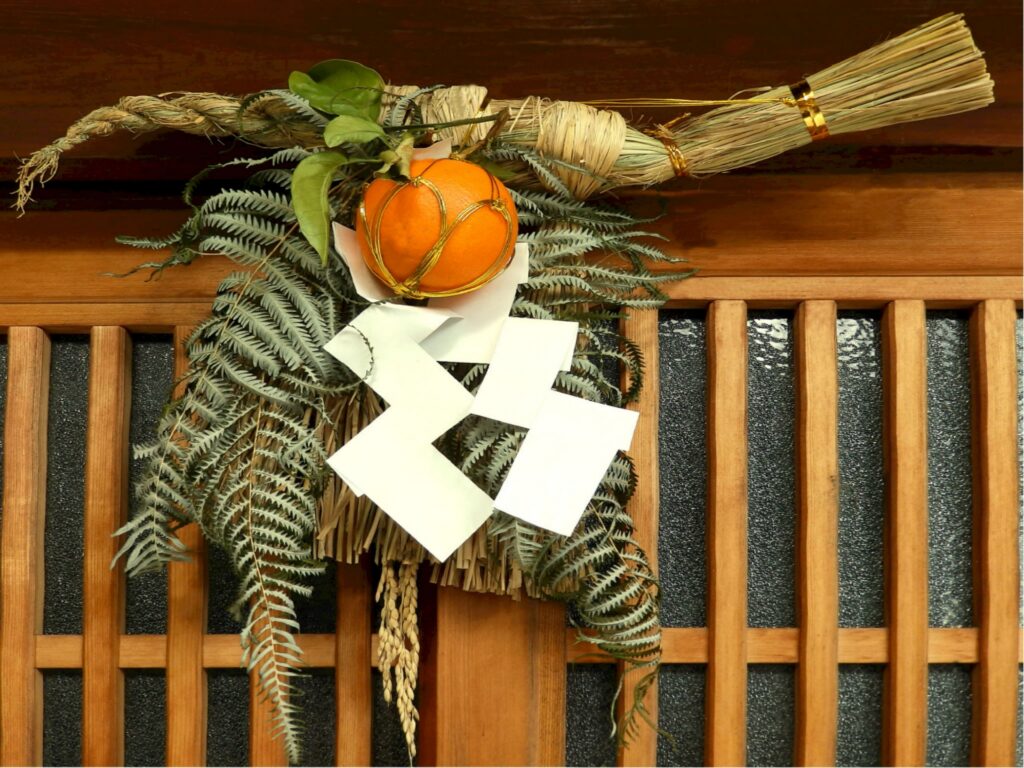
注連飾り(しめかざり)/Shimekazari
新年にお正月(歳神さま)をお迎えするのに相応しい神聖な場所であることを示す
Indicates that it is a sacred place suitable for welcoming the New Year (Toshigami) in the new year.
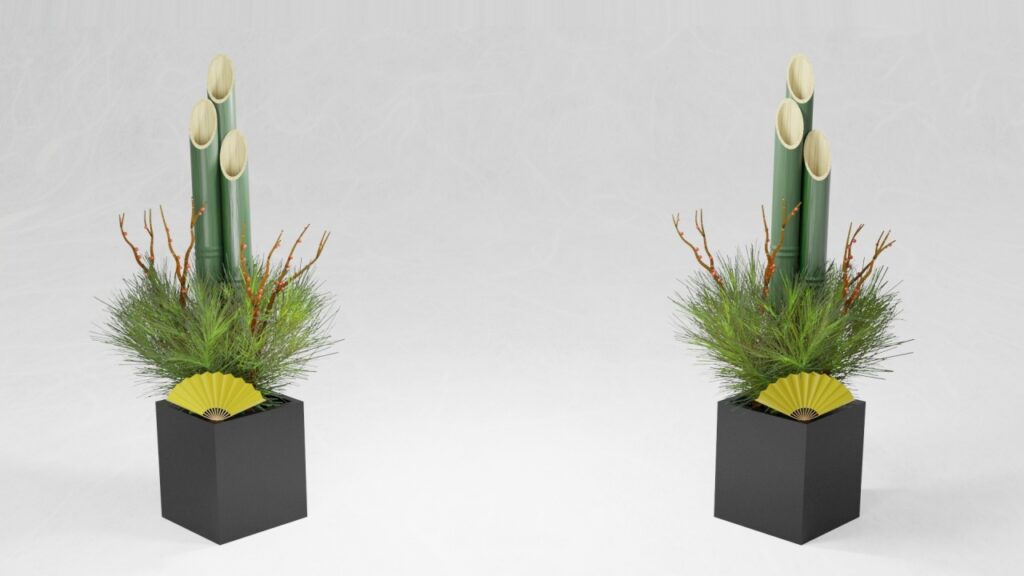
門松(かどまつ)/Kadomatsu
お正月(歳神さま)の依代(よりしろ)=神霊が出現するときの媒体となるもの。神霊の寄りつくもの。
Yorishiro (=Something that serves as a medium when a divine spirit appears. Something that divine spirits approach) for the New Year (Toshigami)

鏡餅(かがみもち)/Kagami mochi
お正月(歳神さま)へのお供え
Offerings for New Year (Toshigami)
昔の金属鏡から連想した、丸く平たい形の餅で、祭礼などの供物にも用いられるが、正月に歳神(年神) (としがみ) に供えるものをいうのが一般的である。年の境にあたり、家族各人の霊魂をかたどった餅を捧 (ささ) げ、霊の更新を図るのが古意で、身祝いの餅はその伝統をとどめている。三方 (さんぼう) にのせ、重ね餅にして飾りたてるのは、蓬莱 (ほうらい) (お手掛け、食積 (くいつみ) ともいう)の形と合体したためである。普通2個を重ねるが、3個の所もあり、それにダイダイ、イセエビ、干し柿 (がき) 、昆布、ウラジロなどを添える。1月11日の鏡開きに家人が食べ、あるいは6月1日まで残しておいて歯固めにする例も多い。
日本大百科全書
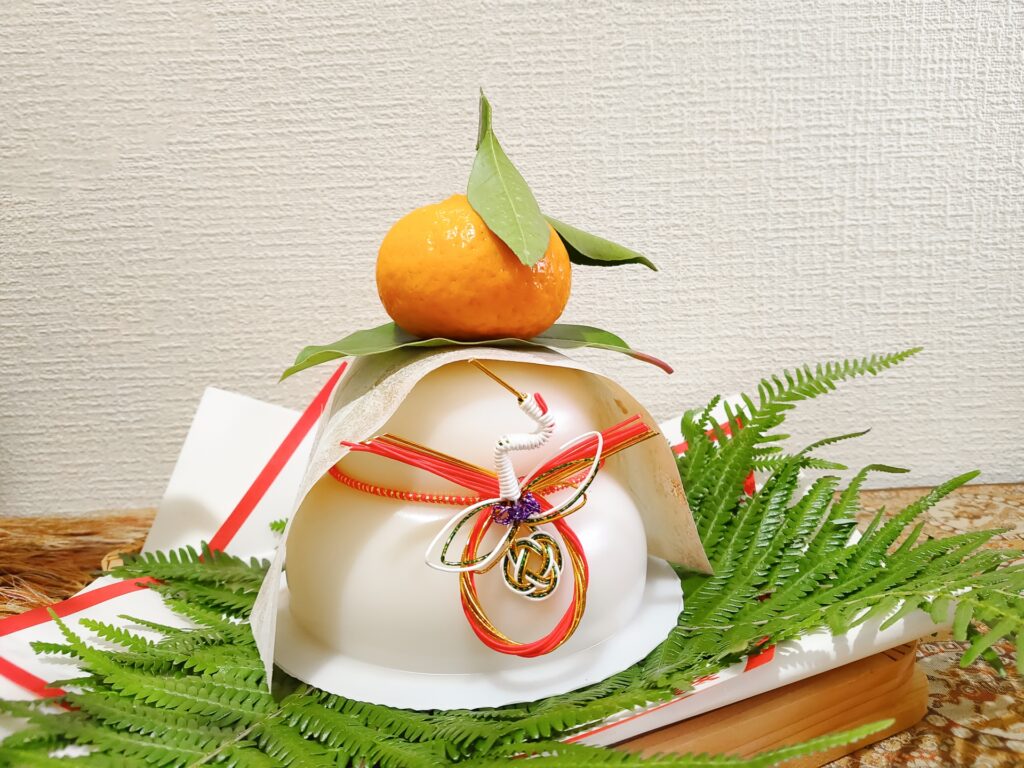
It is a round, flat rice cake reminiscent of old metal mirrors, and is also used as an offering at festivals, but it is generally offered to Toshigami during the New Year. At the end of the year, it was an old idea to offer a rice cake shaped like the soul of each family member to renew the spirit, and the tradition of rice cakes as a gift continues. The reason why it is placed on three sides and decorated as a layered mochi is because it combines with horai (also called tekake or kuitsumi). Usually two pieces are stacked on top of each other, but sometimes there are three pieces, and other items such as Japanese daidai, spiny lobster, dried persimmons, kelp, and Urajiro(white-backed leaves)
are added to the dish. There are many cases where families eat it on Kagami Biraki on January 11th, or leave it until June 1st to eat it.
除夜の鐘/New Year’s Eve Bell
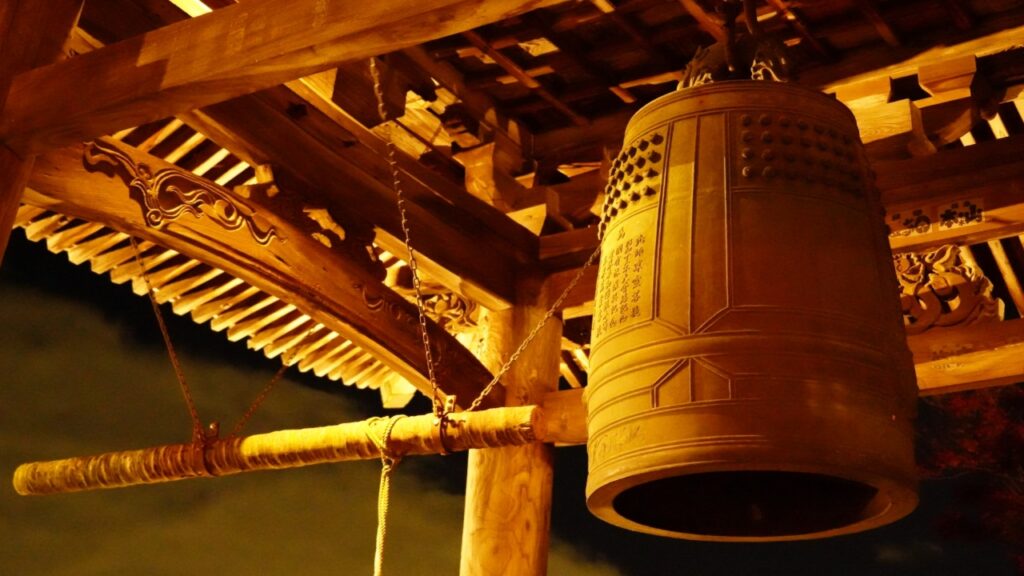
大晦日の夜から新年にかけて、人間がもつ煩悩の数と同じ108の鐘を鳴らす仏教行事。
A Buddhist event in which 108 bells are rung, which is the same number of earthly desires that humans have, from the night of New Year’s Eve until the new year.
年越し蕎麦(そば)/New Year’s Eve Soba
細く長くという長寿や一家団欒を願う縁起、また切れやすいことから1年の厄を断ち切るという意味などを持つ、大晦日の夜に食べるそば。
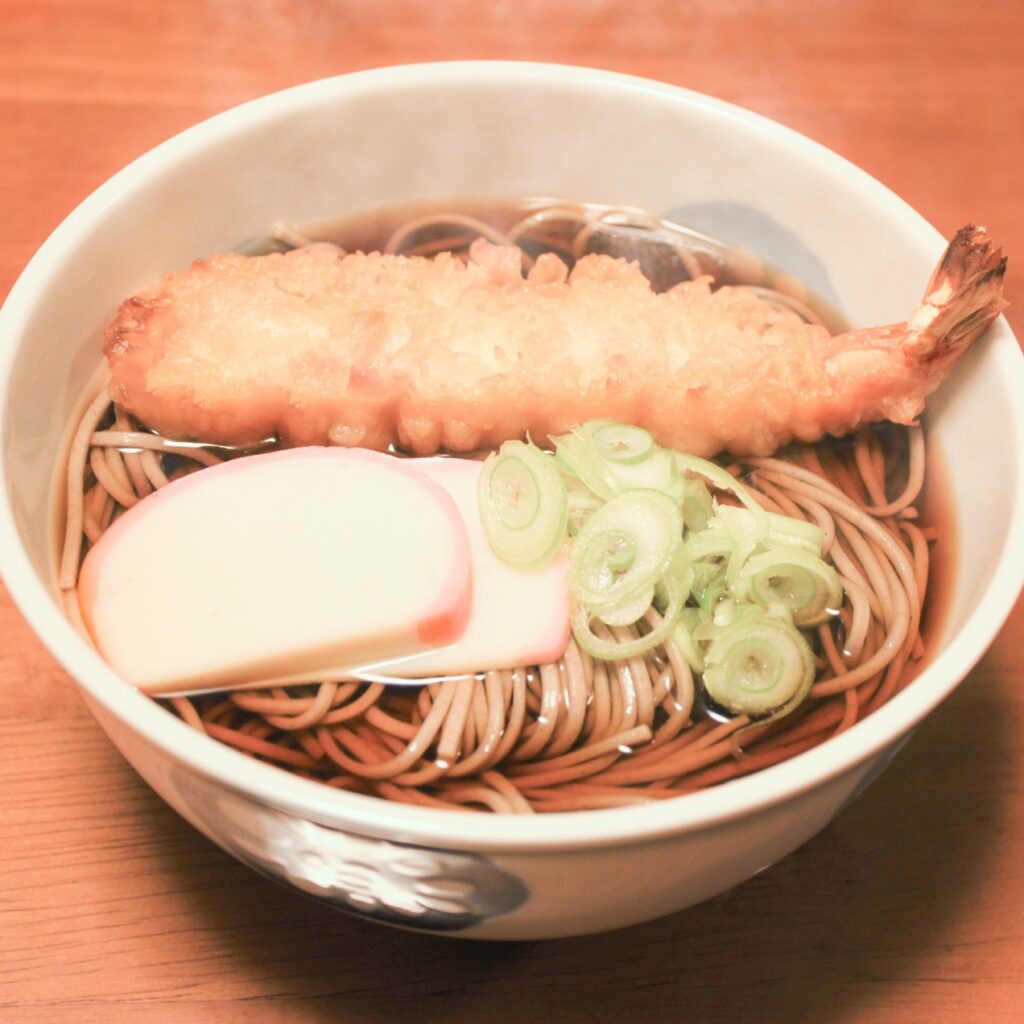

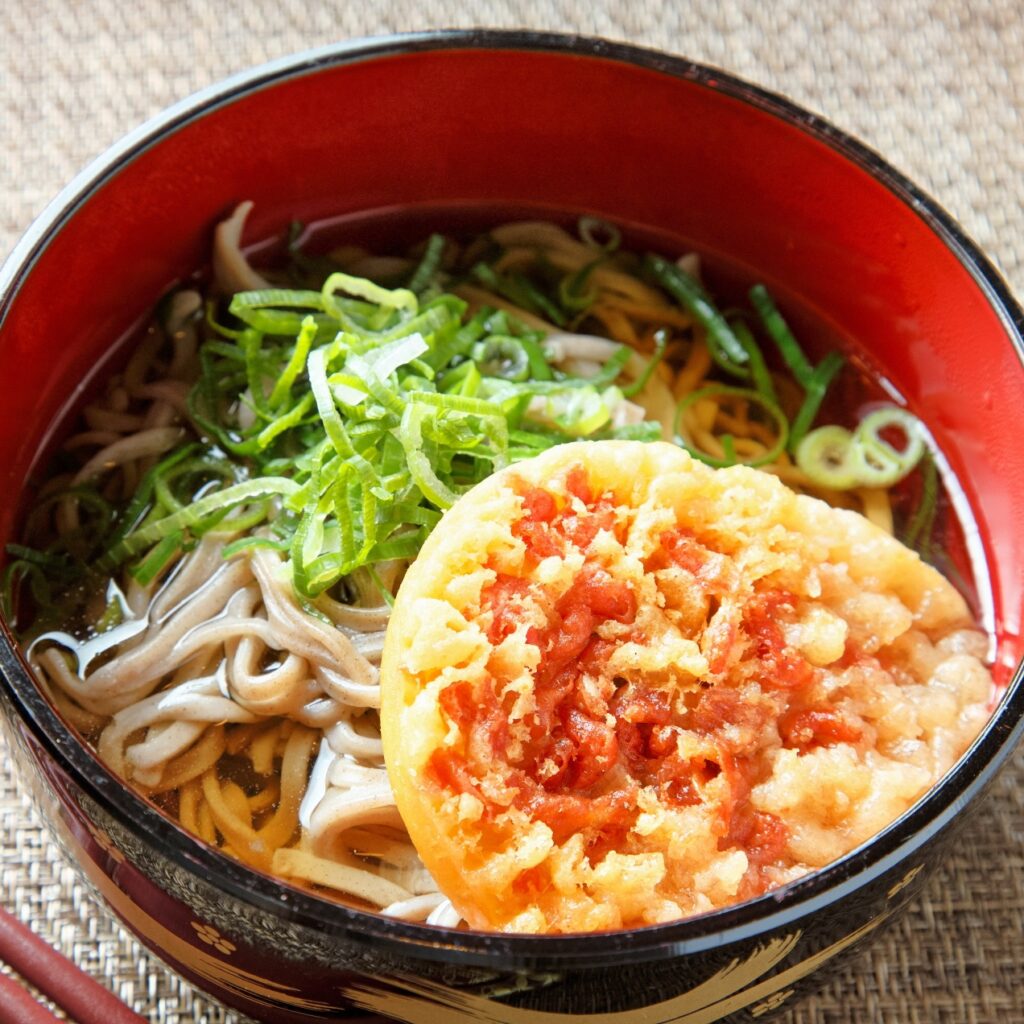
Soba eaten on New Year’s Eve is said to be a good luck symbol for long life and family harmony, and it has the meaning of warding off the bad luck of the year because it is easy to cut.
